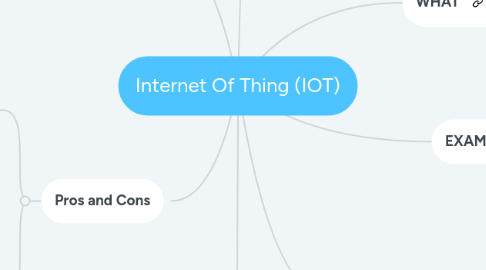
1. Why IoT is important
1.1. IOT helps people live and work smarter, as well as gain complete control over their lives. In addition to offering smart devices to automate homes, IoT is essential to business.
2. Pros and Cons
2.1. Pros
2.1.1. ability to access information from anywhere at any time on any device
2.1.2. improved communication between connected electronic devices;
2.1.3. transferring data packets over a connected network saving time and money
2.1.4. automating tasks helping to improve the quality of a business's services and reducing the need for human intervention.
2.2. Cos
2.2.1. As the number of connected devices increases and more information is shared between devices, the potential that a hacker could steal confidential information also increases.
2.2.2. If there's a bug in the system, it's likely that every connected device will become corrupted.
2.2.3. Since there's no international standard of compatibility for IoT, it's difficult for devices from different manufacturers to communicate with each other.

